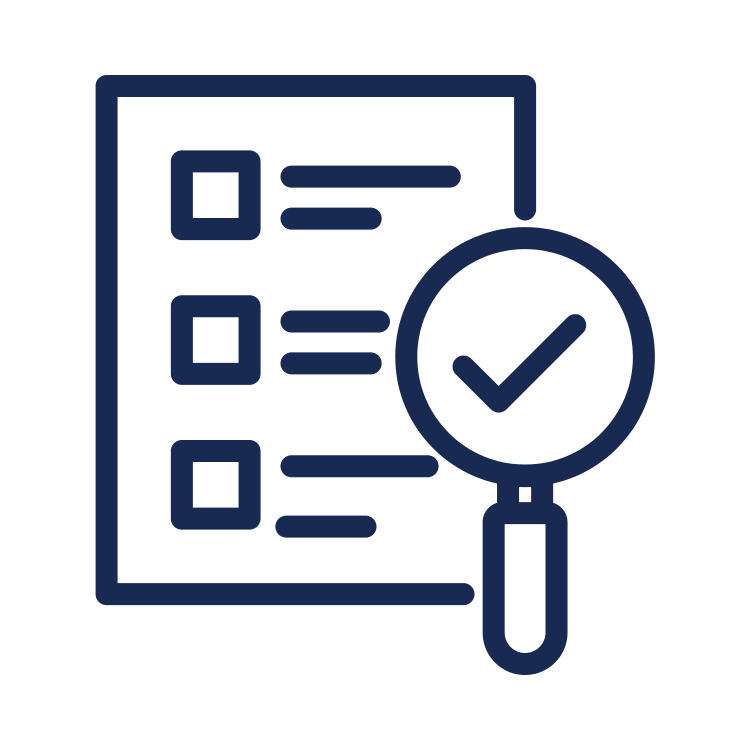This collection of resources is meant to support faculty who are interested in learning more about and responding to generative artificial intelligence (AI) technology in the classroom.
We are happy to add additional resources here and would love your feedback. Please email any comments or suggestions to Dr. Lauren Mitchell (lnahas@santarosa.edu), the Instructional Designer for the Office of Distance Education.
Need Support?
If you would like support related to redesigning or securing assessments in response to AI, sign up for an Instructional Design Consultation.
GenAI at SRJC
The following is a timeline of SRJC's response to the release of generative AI tools:
-
SRJC purchases a license for Turnitin's AI detection tool that integrates with Canvas assignments - Spring 2023
-
The Academic Senate discusses “Resolution on the Ethical Integration of Generative Artificial Intelligence (GenAI) in Education” - August 21, 2024
-
The Academic Senate establishes an AI Taskforce - Oct 2, 2024
-
The Academic Senate discusses the AI Taskforce's recommendations - December 4, 2024
-
The Academic Senate recommends the creation of an District-wide GenAI Taskforce - April 2, 2025
Introductory Resources: What is Generative AI?
Browse the resources below to get a basic introduction to generative AI, or large language models.
- The video to the right gives a brief but thorough overview of how generative AI, like ChatGPT or Gemini, actually work.
- Introduction to AI for Teachers and Students, by Ethan Mollick and Lilach Mollick, Wharton School, University of Pennsylvania
- This YouTube playlist is a great place to start. The Mollicks are considered two of the key voices on AI and higher ed.
- A Very Gentle Introduction to Large Language Models without the Hype, Medium — In-depth (but reasonably short) definitions of key AI terminology for folks without a Computer Science background. Plus, helpful visuals. Covers large language models, machine learning, neural networks, etc.
In-Depth Training and Professional Development
 Generative AI in the Classroom, California Virtual Campus (@ONE) — @ONE offers this both as a 2-week self-paced course and a more in-depth 4-week facilitated version.
Generative AI in the Classroom, California Virtual Campus (@ONE) — @ONE offers this both as a 2-week self-paced course and a more in-depth 4-week facilitated version.
Artificial Intelligence Teaching Guide, Stanford University — This single-module course helps you think through the implications of AI for your course, create an AI course policy, and consider how you might incorporate AI into your course.
Generative AI Prompt Literacy, University of Michigan-Flint — This course provides both a basic introduction to AI and strategies to write effective prompts to make the most of these tools. The course also covers ethical issues and bias in AI.
AI for Learning: Integrating Artificial Intelligence Into Your Teaching, Carnegie Mellon University and College of the Canyons — This course covers the full design loop of integrating Artificial Intelligence into your teaching and higher‑education classrooms, from foundational concepts to real‑world application.
Ongoing Sources of AI Professional Development, Anna Mills, English Instructor at College of Marin, compiled this useful list of resources.
How to Respond to AI in the Classroom: Short and Long-Term Strategies
 The strategies below are based on the presentation, "The Opposite of Cheating: Teaching with Integrity in the Age AI," by Tricia Bertram-Gallant, Director of the Academic Integrity Office at UC San Diego.
The strategies below are based on the presentation, "The Opposite of Cheating: Teaching with Integrity in the Age AI," by Tricia Bertram-Gallant, Director of the Academic Integrity Office at UC San Diego.
Short-Term Strategies
In the short-term, we recommend that you develop an AI policy for your courses. This is the key to communicating clearly with students. Once the policy is established, we recommend that you talk with your students about the policy and about AI in general. Finally, if you have a conditional, restricted or closed AI policy, consider taking measures to secure your assessments. Use the resources below to get support and view examples of each of these steps.
- 1. Create Your Syllabus Policy
UC San Diego's Guide to Creating AI Syllabus Policy - This guide walks you through the process of creating a syllabus policy and prompts you to reflect on your various assessment types.
ASCCC Sample Syllabi Statements on AI - Provided by the Academic Senate of the California Community Colleges.
Leon Furze's AI Assessment Scale - This provides a different approach than the one from ASCCC and is worth considering.
Sample Syllabus Policy Statements, University of Texas at Austin, Center for Teaching and Learning - More samples to consider.
The policy isn't the end. Once your policy is created, reference it in key assessments and talk to students about it throughout the semester.
- 2. Talk with Students about AI in the Classroom
To demonstrate your commitment to academic integrity and that you value clear communication with your students on this issue, it can be helpful to take the time to talk to students about your AI policy. This is also an opportunity to clarify to students how AI impacts the integrity of the course's learning goals. Consider the following activities:
- Survey Students about AI. Make the anonymous results public so that students can see how their peers are using and thinking about AI.
- Take class time to review the course's AI policy and explain your reasoning behind the policy. Consider this annotation and discussion approach, using SRJC's social annotation tool Hypothes.is.
- Have students evaluate whether or not the use of genAI is appropriate in the course for various assessments. Then discuss as a class to come to a consensus. Worksheet: Reflection Sheet for Student Use of AI.
- 3. Secure Your Assessments
If your Syllabus policy states that AI use is Closed, Conditional, or Restricted, consider taking steps to secure your assessments. Your students are human and the temptation of AI is strong, especially for students who are unsure of their academic skills. There are various ways to discourage inappropriate use, ranging from using Canvas settings to online proctoring tools.
Canvas Features - Learn how to set up your quizzes to discourage academic dishonesty.
Zoom Proctoring - Use this guidance to help you prepare to proctor an exam via Zoom.
Turnitin's AI Checker - SRJC currently (spring 25) has a license for Turnitin's AI detection tool. While, these tools have been found to produce false-positives, they can provide you with useful information if you suspect a student is using AI inappropriately. The consensus on these types of tools is that they should not be relied upon as the only form of evidence of academic dishonestly.
The following resources will help you get started with Turnitin's AI detection tool:
- Addressing Artificial Intelligence, Washington University in St. Louis - This provides some ideas on how to use AI detection tool results effectively.
- Approaching Students about AI Detection Results - Guidance on how to talk to students when Turnitin's tool flags their writing as AI generated.
- How to Add Turnitin to an Assignment
- Turnitin's AI Detection Support Articles
- How to View the Turnitin Results in Speedgrader
Remote Proctoring with Proctorio. SRJC currently has a license with Proctorio. Proctorio enables instructors to use the Lock-Down Browser or Live Proctoring options to increase assessment security.
Instructors who decide to use Proctoring software should take the following steps to communicate with students and ease anxiety around proctoring and exams:
- Let students know that proctoring software will be used at the beginning of the course.
- Create a practice experience with the proctoring tool so that students can make sure that their computer is properly set up to take the test.
- Inform students about how to get help if they need it during the proctored exam, and link directly to where they can access that support from the assignment.
To get started with Proctorio, enable Secure Exam Proctor in the course navigation via the Settings area in Canvas. Then follow the instructions in the Proctorio quickstart guide.
Long-Term Strategies
Simply banning genAI use and using detection tools are unsustainable responses to AI misuse. Because of this, student learning outcomes, assessments and/or grading methods may need some rethinking and revision.
It's important to acknowledge that these types of changes are not simple and can be time-consuming. However, the investment now will save on the time and energy put into AI detection in the long run. In addition, many of these changes can be transformative for your classroom and your students. Explore the resources below and think about which ones make the most sense for you, are the most reasonable for you to execute, and will most benefit your students and classroom.
- 1. SLO Revision
Student learning outcomes (SLO) need to be refreshed over time and in response to major technological changes, like AI.
Use the Reconsidering Learning Outcomes site from UC San Diego's Office of Academic Integrity as a guide for SLO revision.
- 2. Assessment Redesign
In light of AI, assessments may need to be altered to (1) shift towards a focus on process rather than product, (2) provide students with more authentic scenarios for demonstrating their knowledge (and thus increasing intrinsic motivation), and, in some cases, (3) incorporate the use of AI as appropriate to the discipline.
Assessment Redesign Guides
Guide to Evaluating AI's Impact on Your Assessments, UC San Diego
4 Steps to Design an AI-Resilient Learning Experience, Massachusetts Institute of Technology
Assessment Ideas
Assessment Ideas Factory, University of Queensland — This is a database of assessment ideas to help with brainstorming.
AI Pedagogy Project, Harvard University — This site provides a showcase of assessment ideas that incorporate AI from a variety of disciplines.
Specific Strategies
Assessment Transparency — Increasing the transparency of your assessments—i.e., being specific about the purpose, directions and grading criteria—has been shown to improve student success and increase intrinsic motivation.
Canvas Discussion Redesign (watch the two 1/2 hour workshops below) — Asynchronous discussions have proven difficult to AI-proof. Instead, focus on increasing intrinsic motivation for participating in discussions by making these assignments more meaningful and valuable to students.
Oral or "Interview" Assessments — Consider moving away from written assessments.
As we all know, students have learned to highly value the grade at the end of the semester. This is also one of the reasons why inappropriate use of AI is so tempting. Consider shifting you grading system to help your students focus more on learning.
The Learning Record, University of Texas, Austin — An evidence-based, metacognitive grading system.
Equitable Grading Strategies: Finding new ways to think about assessment, California Virtual Campus (@ONE) — A four-week course that guides participants in exploring alternative grading strategies.
Alternative Approaches to Assessment, Harvard University — A summary of a variety of different alternative assessment methods.
Instructure (Canvas) AI Feature News
Canvas Community Discussions of AI
